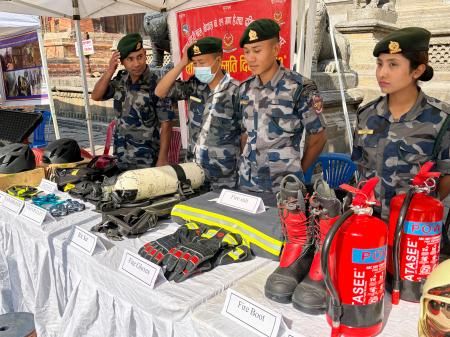Remembering Nepal's 2015 Earthquake: A Decade of Resilience and Reconstruction
Ten years after the devastating earthquake, Nepal reflects on loss, recovery, and the ongoing journey towards resilience.
On April 25th, 2015, a magnitude 7.8 earthquake struck Nepal, leaving an indelible mark on the nation's history. The catastrophic event claimed thousands of lives, injured countless more, and left a trail of destruction across the Himalayan nation. As we mark a decade since this tragedy, it's crucial to remember the immense loss, celebrate the remarkable resilience of the Nepali people, and examine the progress—and challenges—of the ongoing reconstruction efforts.
The Devastation: A Nation in Ruins
The 2015 Nepal earthquake was a defining moment. The immediate aftermath was chaotic, with widespread damage to infrastructure, including:
- Homes and Buildings: Countless homes and ancient historical structures crumbled, leaving millions homeless. The UNESCO World Heritage sites of Kathmandu Valley suffered significant damage, impacting invaluable cultural heritage.
- Transportation Networks: Roads and bridges collapsed, hindering rescue efforts and disrupting supply chains. This isolation exacerbated the suffering in remote communities.
- Healthcare Systems: Hospitals and medical facilities were overwhelmed, impacting the ability to provide timely and effective medical care to the injured.
Beyond the Numbers: Human Stories of Loss
The sheer scale of the disaster is almost impossible to comprehend through statistics alone. Behind the numbers lie countless stories of individual loss, hardship, and courage. Remembering the human cost of the earthquake is paramount. Many families lost loved ones, their homes, and their livelihoods. The psychological impact continues to resonate through communities today.
The Road to Recovery: A Decade of Progress and Challenges
The international community rallied to support Nepal's recovery efforts, providing substantial financial and humanitarian aid. However, the reconstruction process has been slow and complex, facing several challenges:
- Bureaucracy and Corruption: Inefficient bureaucracy and allegations of corruption hampered the timely distribution of aid and the progress of reconstruction projects.
- Geographical Challenges: The mountainous terrain of Nepal made accessing remote and affected areas incredibly difficult, delaying aid delivery and hindering reconstruction work.
- Political Instability: Political instability and shifting priorities within the Nepalese government further complicated the recovery process.
Successes in Reconstruction: A Glimmer of Hope
Despite the challenges, there have been significant achievements:
- Housing Reconstruction: Millions of homes have been rebuilt, although the pace remains uneven across different regions. The government's housing reconstruction program, though imperfect, has played a key role.
- Infrastructure Development: Improvements have been made to transportation networks, although many rural areas still lack adequate infrastructure.
- Community Resilience: The spirit of the Nepali people has been a powerful force in the recovery process, with communities working together to rebuild their lives and livelihoods.
Lessons Learned and Future Preparedness
The 2015 earthquake served as a stark reminder of the importance of disaster preparedness and resilience. Nepal has made strides in improving its disaster response mechanisms, but much more needs to be done:
- Building Codes and Enforcement: Stricter building codes and their effective enforcement are crucial to mitigate future earthquake damage.
- Early Warning Systems: Investing in advanced early warning systems can provide precious time for evacuation and preparedness.
- Community Engagement: Engaging communities in disaster preparedness planning is crucial for effective response and recovery.
Remembering and Moving Forward
The tenth anniversary of the 2015 Nepal earthquake is not merely a date on the calendar; it's a moment for reflection, remembrance, and renewed commitment. Remembering the victims and acknowledging the ongoing challenges is essential to ensuring that the lessons learned are applied to build a more resilient and safer future for Nepal. Let us honor the memory of those lost by continuing to support the ongoing recovery efforts and striving to prevent similar tragedies in the future. Learn more about ongoing support efforts through organizations like [link to relevant NGO].
Keywords: Nepal earthquake 2015, Nepal earthquake recovery, Nepal earthquake reconstruction, Nepal disaster relief, Himalayan earthquake, earthquake resilience, disaster preparedness, Nepal rebuilding, UNESCO World Heritage, Kathmandu earthquake
Semantic Keywords: Nepal earthquake impact, post-earthquake Nepal, Nepal aid, Nepal reconstruction challenges, building codes Nepal, disaster response Nepal.
